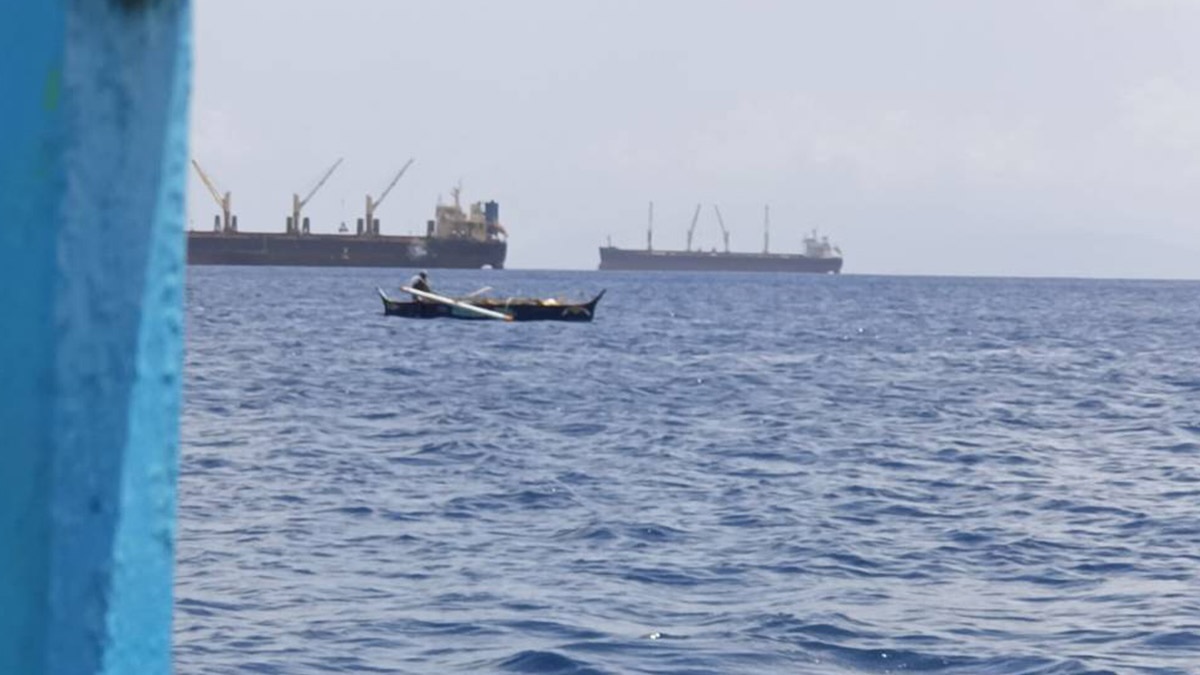
UNDER SCRUTINY | The presence of these Chinese-manned international cargo ships in the waters off Homonhon Island, shown in this photo taken on May 16, 2024, is being monitored closely by the Philippine Coast Guard, which has set up a station on the island. —Photo by Roel T. Amazona, contributor
TACLOBAN CITY, LEYTE, Philippines — The Philippine Coast Guard (PCG) has established a station on historic Homonhon Island in Guiuan town, Eastern Samar province, to monitor the movements of Chinese cargo vessels docked along its waters.
Cmdr. Elgene Gregorio, acting deputy commander of the PCG in Eastern Visayas, clarified that the presence of these Chinese vessels in the waters off Homonhon is legal since these are international cargo ships that have permits to transport minerals produced by the mining firms operating on the island.
However, he said, the PCG needed to “ensure that they will not engage in any illegal activities.”
READ: Chinese Navy ships seen off Basilan; ‘innocent passage,’ says AFP
“Our course of action is to put up a unit on Homonhon to help us monitor their activities and ensure compliance with the law,” Gregorio added.
The PCG station on Homonhon was established on May 20, said Gregorio.
At least four mining companies owned or affiliated with Chinese firms operate on the island to extract chromite or nickel.
These companies are Emir Mineral Resources, Techiron Resources Inc., Global Min-Met Resources and Verum Terra Geoscience Inc.
The minerals being collected from these mining firms are directly transported to China, their primary market.
Monitoring job
Gregorio said the decision to establish a unit on the island, where Portuguese explorer Ferdinand Magellan landed in 1521, was mainly part of their mandate to monitor foreign vessels entering Philippine waters.
“We are doing our best to safeguard our territorial waters and ensure that no foreign vessel will enter our area to conduct any illegal activities,” he said in an interview.
According to Gregorio, the presence of the Chinese vessels, mostly manned by Chinese nationals, has raised concerns among villagers.
He said he could not give yet the exact number of Chinese vessels docked in the waters of Homonhon at any given time.
Last April, Bishop Crispin Varquez of the Diocese of Borongan, the provincial capital, raised concerns over the “escalated mining operations” on Homonhon Island.
He appealed to authorities to carefully study the mining projects on the island to ensure that these will not have devastating effects on the environment and the local residents.
“We call on our government leaders and concerned agencies to take action on this matter and to consider primarily the preservation, safety and welfare of the affected areas and its residents,” he added.
The 20-kilometer-long island, which is prominent for its vast deposits of nickel and chromite, has been grappling with open-pit mining since the 1990s.
The Diocese of Borongan has been spearheading campaigns to preserve and protect the island’s remaining biodiversity, asking authorities to stop the mining operations on Homonhon Island.
The requests, however, remained unheeded.

